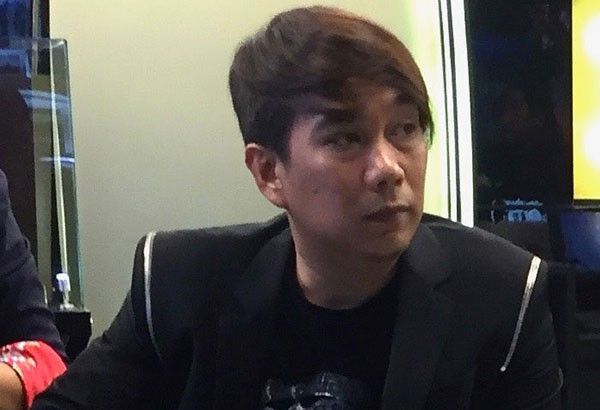Ronald Ventura’s existential carousel at MOCA Taipei

Rainbow bridges, carousels a-spinning, Aeromen a-flying… it was similar to taking the red pill and the blue pill at the same time and vomiting an entire kaleidoscope of art and wonderment in late last year’s show at the Museum of Contemporary Art (MOCA) in Taipei, Taiwan. Colorful, yes, but with a tinge of melancholy and alienation involved.
Paintings plus sculptures plus light boxes plus installations… those were what visitors saw and were awed by during Filipino contemporary artist Ronald Ventura’s “Project: Finding Home” solo exhibition on view for more than two months at MOCA Taipei. But backstories were legion. More strands of undulating ideas in the large-scale “Rainbow Bridges” outdoor installation. More meat to the bone being gnawed at by stray dogs in Ventura’s dark imagery in “Tira-tirahan.” More absurdist situations than the image of two figures on a boat, doggedly headed for opposite directions.
The monolithic “Carousel” at the museum lobby was riddled with mythological creatures, ferocious beasts as well as human-animal hybrids. According to the exhibition notes, “The eclectic style (in which the rides of the carousel are rendered) speaks of the emergence of artistic styles and movement — from Classical Realism to Cubism to Japanese animé.” Thus, it can be explained as a fantastical, anthropomorphic revolving machine telling the history of art. Round and round, up and down, curiouser and curiouser we go. It’s the circle of life, baby. A manananggal sculpture holds court in the installation.
Snaking over the space fronting MOCA was Ventura’s “Rainbow Bridges” art installation. Here, bamboo tubes had been shaped into curvilinear bridges or walkways, looping as if in infinity. Again, these curatorial notes: “It can be viewed as akin to the interlocking double helix of a DNA, highlighting one’s origins and roots, kinship ties and blood relations… Like threads so intimately knotted that they become impossible to untangle, which can speak of links and ties that bind in our lives… The choice of bamboo as a medium and rainbow as a color scheme was not incidental either. Bamboo’s flexibility makes it ideal for the undulating form, and at the same time can symbolically represent values such as resiliency and humility.”
We can only wonder whether Ronald Ventura dreamed up the strategy for this exhibition while in an airport, in one of his travels for exhibitions in the States or Europe, or on the way home. And he might have felt the dislocation of the traveler: of being neither here nor there, in transit, between borders, caught in the unclear country between toing and froing.
How does one define the concept of “home,” Ventura asked during an artist talk held at MOCA. He continued, “Is it a physical manifestation of a home, or is it a place where you find rest — whether it’s in your home country or not? The entire exhibition is an exploration of the concept of ‘home.’ It’s about how traveling confuses one’s sense of coming and going.” Even the carousel is not round as ordinary carousels are; it’s actually hexagonal, with six sides forming the shape of a house.
The most awe-inspiring piece in the entire show was Ventura’s re-visitation of a Carlos “Botong” Francisco bayanihan painting. But there’s an air of contemporary gloom in Ronald’s work. A man in a gas mask presides over the carrying of the barong-barong. An askal barks out a cartoonish fist-and-thunderbolt combo. War, pestilence and famine intrude into the idyllic setting. Stone columns and cubist shapes create one hell of a community bacchanalia.
As an artist always traveling from one country to another, he decided to doff his hat to an important sector in Philippine society. “The exhibition is also a tribute to our overseas Filipino workers,” said Ventura. “I always encounter them whenever I travel. And here in Taiwan, we have a lot of countrymen working for a living, enduring hardships and loneliness, just to secure a brighter future for their families.”
And this idea resonates closer to home. Ventura concluded, “I am a son of an overseas contract worker. My father worked for years in Saudi Arabia, so I know the feeling of a how a loved one is missed back home.”
And, usually, in absence grows the sliver of art.



















